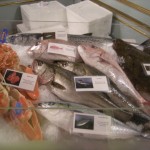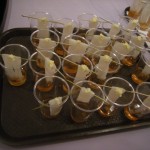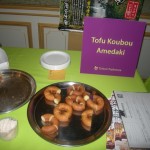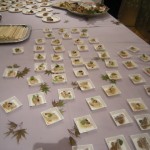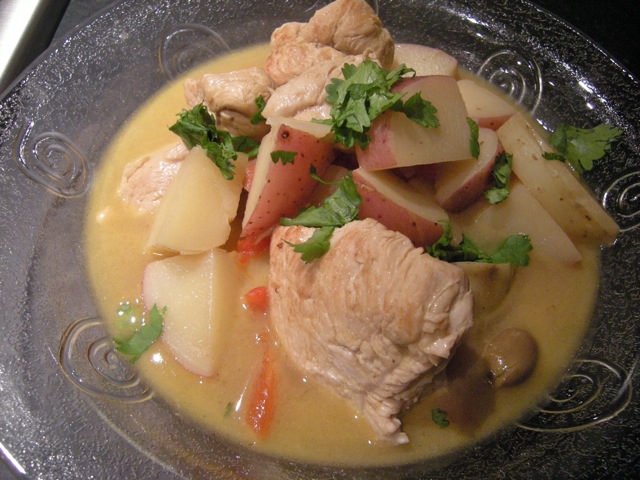Last week Stephanie turned 30 & her statement/wish was : 30 candles, 30 desserts! About 50 people gathered at a rented “Gîte Rural Municipal” —that is a self catering cottage— in Aventignan, a small village of 135 dwellers in the foothills of the Pyrenees. The birthday girl had handled announcements, decorations, games & music. Christine, the mother & also my brother’s companion, who was a restaurant owner and cook for many years, handled all the shopping & cooking with the skilled assistance of her older daughter, Magali. Before getting into the dessert list let me give you the menu of the prandium.
The gathering started around noon with a 2 hours “apéritif” (that is cocktail hour), where mini patés en croûte, slices of dry salami, Spanish ham, peanuts, dried corn kernels and olives accompanied a stiff fruit punch and an equally stiff sangria. The cocktails were the mischievous oeuvre of Magali.
I was really happy to go help in the kitchen in order to avoid getting plastered before sitting at the table! I helped slice the delicious “Terrine de Foie Gras” that Christine had made from scratch a few days before & I dressed the mixed green. At 2:30 pm a cute thank you speech by the birthday girl gave us permission to dive into our foie gras plate. This was paired with a Tariquet: première grives wine. I am not a big fan of sweet white wines in general, but I must say that I really enjoy this late grape from Gascony. This is what the producer has to say about it & I beleive it is available in the U.S:
Origin:
Gascony, Bas-Armagnac Grown, produced and bottled by Domaine du Tariquet.
Varieties:
Gros Manseng and other late-harvest regional grape varietiesServing suggestion:
Serve chilled, as an aperitif or with a meal. Excellent with foie gras, white meat or soft cheese.Tasting notes:
Les premières grives, sheer pleasure!
In Gascony, the onset of winter heralds the arrival of the first thrushes (‘premières grives’), eager for their share of the season’s pickings. Harvested in late autumn, mature grapes packed with sweetness and pleasure produce an elegant wine, with fine typicity. Great fullness on the palate, with delicious tropical flavours, sustained by freshness. Balanced sweetness leads to fresh grapes on the finish – an instant delight.

My parents: Jean Peyrafitte (87) Renée Peyrafitte (80)!
Now back to the kitchen to slice the rare roast beef while the rest of the crew was setting up gratins dauphinois & flan de courgettes (zucchini flan). All very tasty. A plate of generic cheese was passed on for the form but everyone was on their starting blocks to get to the dessert buffet. Even my dad who usually doesn’t eat dessert had 4 of them, 1 éclair au chocolat, 1 mousse au chocolat, a few spoons of crème Anglaise, a slice of Barroussaise. My mother refused to confess what she had. I had 4 small servings: 1/2 chocolate éclair, a few spoons of crème Anglaise with a thin sliver of Kouggloff, ½ slice of tarte Barroussaise.
Does that say that abundance might leads to excess? Oui!

Stephanie, the birthday girl & Pierre Peyrafitte, my brother
This is the list of desserts and thank you Stephanie for inviting me and providing the list:
1. Russe
2. Millefeuille
3. Eclairs au chocolat
4. Banofee
5. Baroussaise —my mother’s: puff pastry dough with almond flavored custard & meringue on top
6. Ile flottante
7. Fromage blanc et ses coulis
8. Salade de fruits frais
9. Fondant au chocolat
10. Tiramisu fruits rouges
11. Cake banane chocolat
12. Croustade aux pommes
13. Gratin de litchis
14. Tarte aux pommes
15. Mousse de framboises
16. Cookies
17. Mousse au chocolat
18. Riz au lait au fraises Tagada
19. Flan
20. Gateau aux framboises
21. Kougelholf
22. Strussel
23. Gâteau chocolat framboises
24. Profiteroles
25. Eclairs au café
26. Panna cotta
27. Millasette
28. Nems aux framboises et chocolat blanc
29. Tarte à la praline rose
30. Gratin d’ananas
And to conclude voilà les pictures of the event.


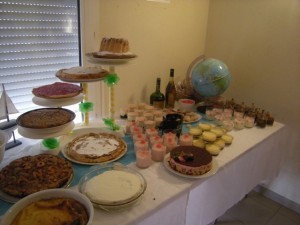
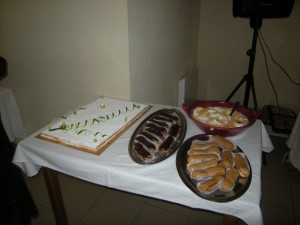
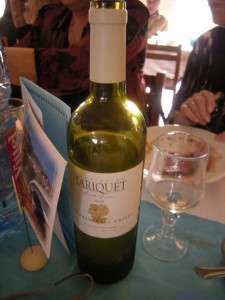

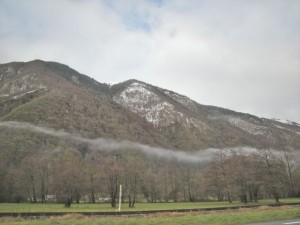
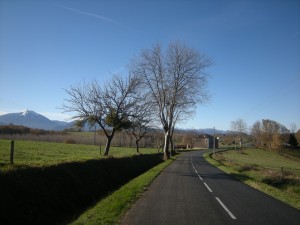
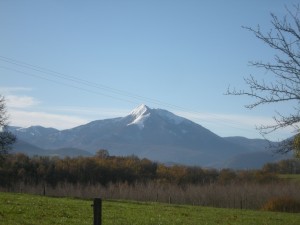
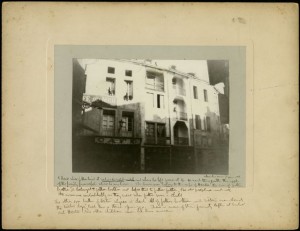
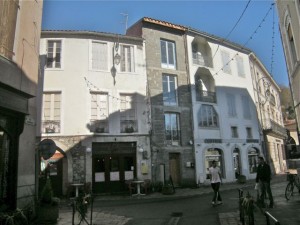
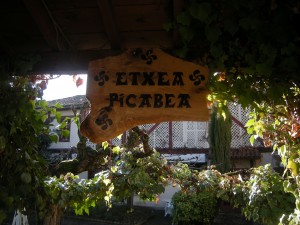
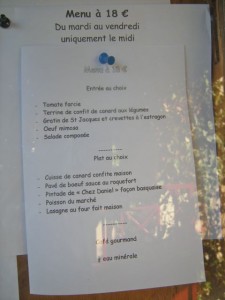
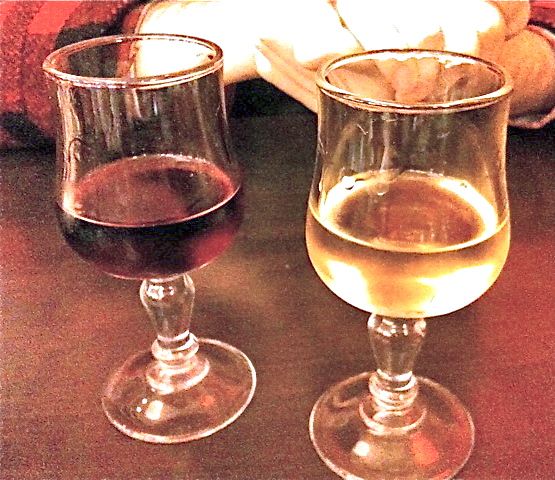

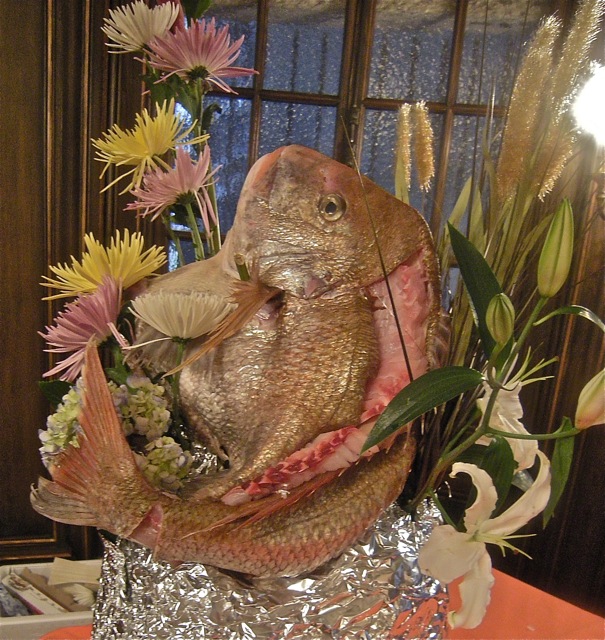
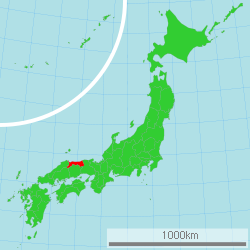



 On the second floor Tottori products were displayed for sampling. Tottori’s water is renown throughout Japan for its purity and richness, thus the quality of the local rice, sake, tofu and other products. I tasted delicious sakes from different grades of polished rice, though I need a few more tastings before I can really appreciate the sake subtleties. I was introduced to 20th century pear liquor and vinegar. They didn’t come from the same company but they were both interesting and I will certainly buy them when readily available. The 20th century pear grown in Tottori is the Nijisseiki variety; in Japanese Nijisseiki means “20th century”. I would assume that the link between the name and the date comes from the fact that the cultivar was created in Japan in1898.
On the second floor Tottori products were displayed for sampling. Tottori’s water is renown throughout Japan for its purity and richness, thus the quality of the local rice, sake, tofu and other products. I tasted delicious sakes from different grades of polished rice, though I need a few more tastings before I can really appreciate the sake subtleties. I was introduced to 20th century pear liquor and vinegar. They didn’t come from the same company but they were both interesting and I will certainly buy them when readily available. The 20th century pear grown in Tottori is the Nijisseiki variety; in Japanese Nijisseiki means “20th century”. I would assume that the link between the name and the date comes from the fact that the cultivar was created in Japan in1898.